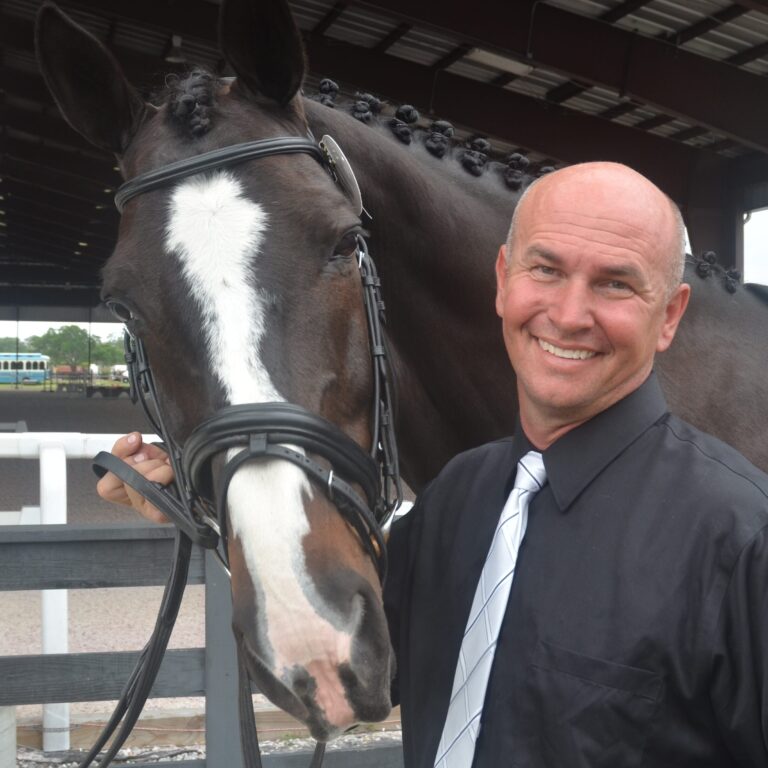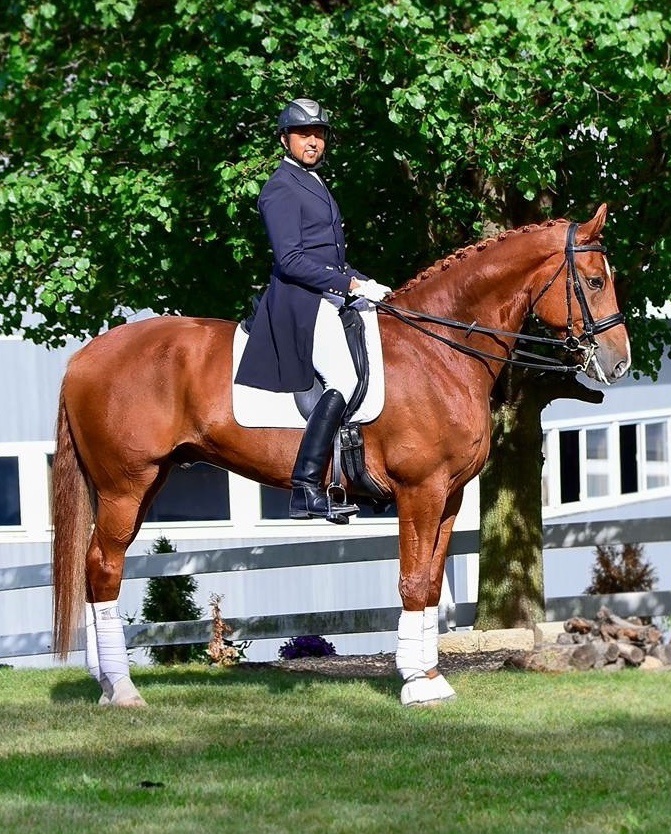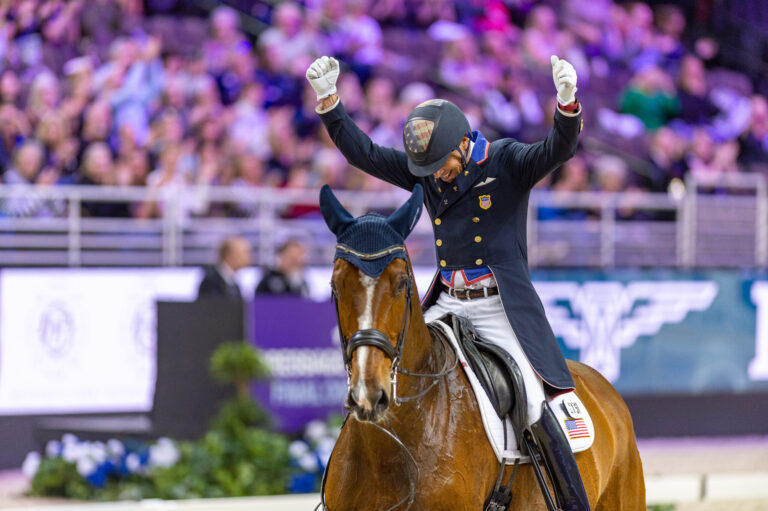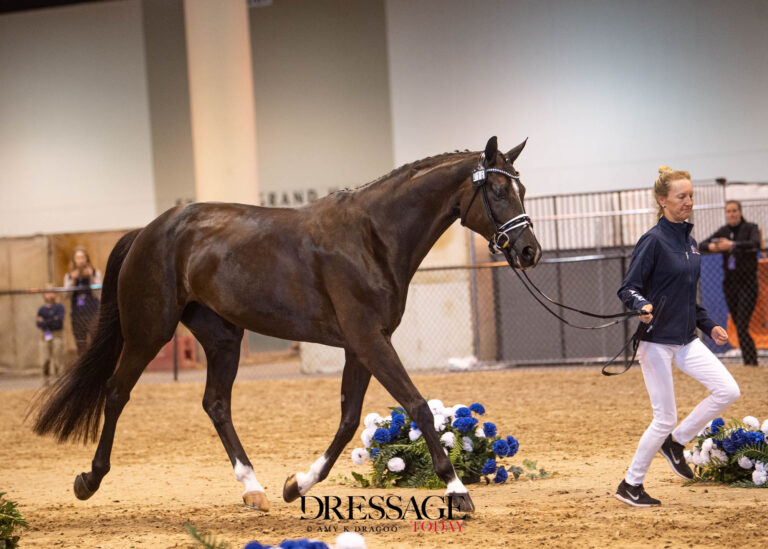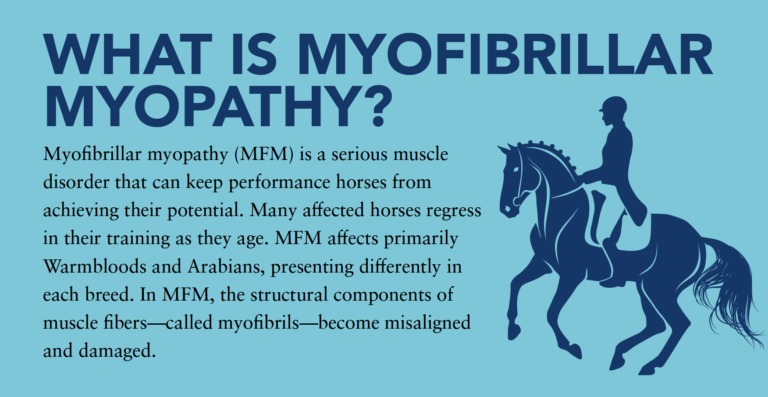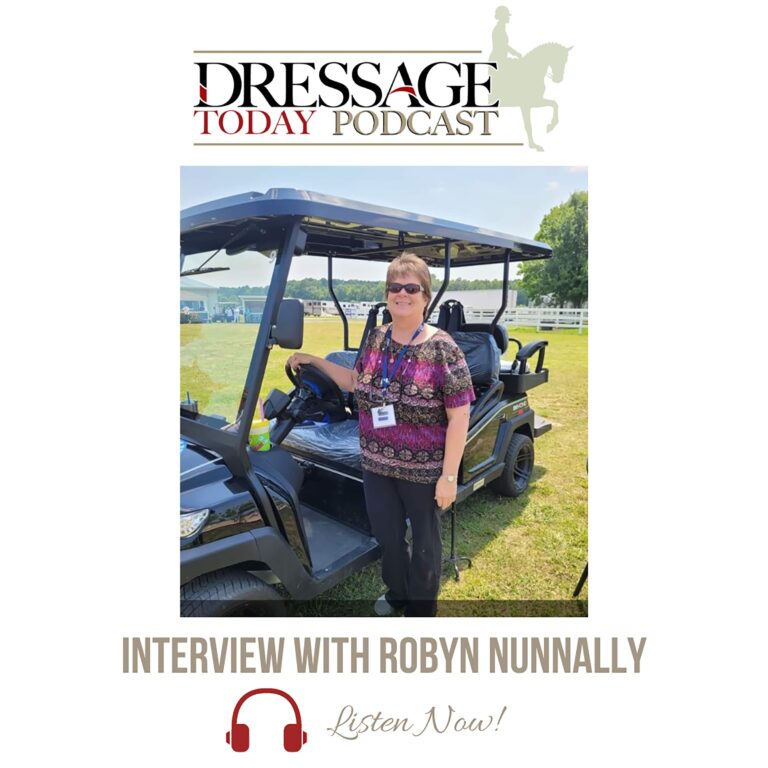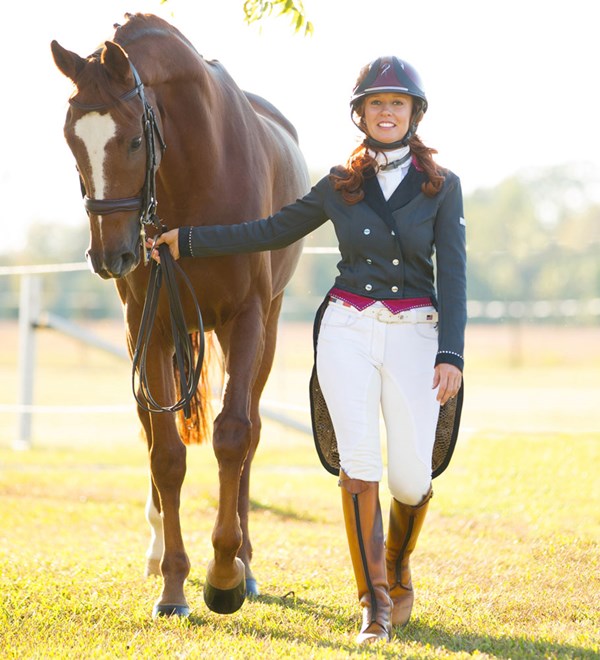
I jumped feet first into dressage in 1998 without looking to see how deep the waters were. I immediately set my sights on learning as much as possible and moving up through the levels in my education, schooling and testing. This wasn’t possible without some clearly defined goals and a wide-ranging team of people to support my effort.
As the host of HorseGirlTV®, I have interviewed some of the most talented and influential people in the horse business. Each interview brings me new insight to our industry. My favorites are the Olympians and other top professionals who came from modest means and through sheer determination, hard work and a bit of luck made it to the top ranks in their fields. It’s ever the American Dream story that I find most inspiring. This is why I feel so strongly about the team concept of an ambitious rider and a talented horse together with a collection of top professionals and generous financial support.
What is your goal? It might be to get a 60-percent score (or higher) from your local schooling show. It might be to ride your first upper-level test with sights on a U.S. Dressage Federation (USDF) medal. Or perhaps you want to be long-listed with the country’s top riders. Local, national, international—it doesn’t matter—you need a team to excel in dressage training and competition. Remember that success is where hard work meets opportunity.
I’m not a car-racing fan, but I am familiar with the concept of NASCAR, and I particularly admire its teamwork. One might think that NASCAR is only about the driver and the car, yet it is a much larger team that puts them on the track. I visualize the snippets of NASCAR from television running in slow motion in my mind as the car and driver speed into the pit to refuel, check the tires and give the driver any necessary maintenance before sending him back onto the track. It’s fast. The dressage equivalent is certainly slower but the components are the same. Every member is crucial to the success of the whole, and true team players of any sport embrace this concept.
I’ve learned that the first thing to do is to think about your dressage goals. Sit down and write down your key goal for this coming show season. It’s amazing how writing something down solidifies it as a legitimate goal. Next, form your support group. I’m certain you’ll find some of the members already in place, helping or waiting in the wings. Below, in mostly alphabetical order, are some members that all successful dressage teams contain.
The Coach/Trainer
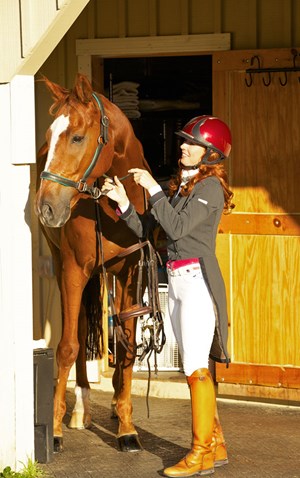
This is your right-hand man (or woman). If you are the team captain, then your coach is most definitely your co-captain. Hopefully, there’s someone in your area that you adore working with who challenges you to be better. It’s even better if they are willing to attend competitions with you, if asked. A talented, articulate and like-minded set of eyes from the ground is crucial to your development as a rider. I was fortunate to have a local trainer who had several quality schoolmasters, and she wasn’t shy about letting her ambitious students (like me) climb aboard to get the feel of quality gaits as well as advanced movements.
Going to clinicians is necessary to broaden your skill set, but that one special person you meld with at home can really help solidify your partnership. When you make the jump from national to international-level tests, you’ll need all the exact pointers you can garner to enter successfully at A and land that superb halt. Yet finding someone you click with is often a challenge. I’ve been consulting and coaching with one of my best friends and colleagues, Geoff Butler of Unique Sporthorses, regularly since 2010, and in this past year of working together, I would think something and almost at the same time Geoff would say the same thing. That sort of communication was paramount in my training to bring my young horse from unbroken to schooling at the Fédération Equestre Internationale (FEI) levels.
The Equipment
You can’t go skydiving without a parachute. Likewise, with dressage, it’s not just a matter of buying a saddle, slapping it on and having a go. You need to continually check your saddle’s fit as both you and your horse develop physically and mentally in your training. I’m not saying to flock your own saddle, but work with someone who truly knows and understands saddle fit with significant experience in the field. You wouldn’t ask a first-time skydiver to pack your parachute for you now, would you?
Find what works for you by studying the new and old products that are available on the market. I am fortunate to have the perfect saddle for both my horse and me at this time, but it hasn’t been without years of trial and error, so don’t give up. What worked well for one horse might not be ideal for another.
How to know if you have the right saddle? I’ve learned that if you step into, sit down on and forget it’s there with zero repositioning, it is working for you.
The same holds true for the rest of your appointments. A quality bridle that doesn’t pinch or pull and apparel where form follows function—those things provide advantages of being both aesthetically pleasing and technically proficient in design. If I’m nicely appointed in well-cared-for attire, including my clean boots and matching my belt, I feel better. Feeling better about yourself can raise your self-esteem and improve your ride.
The Farrier
No hoof, no horse. How many times have you heard that and sighed? Your farrier is a crucial component to your team and, if you’re lucky enough, you can find one willing to work hand in hand with your veterinarian to discuss conformation and movement with you. Do your homework on hoof care, trimming and proper blacksmith work. You’ll want that extra mobility and correct angle of the coffin bone that can mean the difference between getting an invitation to regionals and nationals or not.
The Moral Support
In 2005, I was warming up for my first Grand Prix test and a fellow boarder at my stable came up to say hello. “I’m here to be your ‘cockroach,’” she said, smiling up at me. In response to my extremely puzzled look, she went on to explain about a study she had read of cockroaches given tasks to perform with no audience and others given the same tasks with an audience of peer cockroaches looking on. It seems the cockroaches with the audience far outperformed the other group. So give thanks for people who are at the show just to give you moral support. Sometimes, the more cockroaches the better as their very presence can improve your performance. The next time you see a family member, friend or colleague out to support you in your riding, think of the cockroach story and it will bring a smile to your face, which will invariably lower your stress level.
The key to this business is personal relationships. Develop the relationships you have with people you believe in and enjoy being around. Foster new relationships with people you admire, respect and who have a positive influence on you. Thank them and be thankful for them.
The Nutritionist
We all know that we need to treat our horses and ourselves like the athletes we are, feeding a balanced diet with the proper supplements. Discuss a nutritional plan with your barn manager and another key player on your team, your veterinarian.
I’d been having challenges putting weight on my competition horse, Hansel, and after trying a variety of feeding options, I was introduced to horse and human nutritionist, Tigger Montague, who directed me to the study of whole foods. I started by reducing the sugar I gave my horse. Then I began reading feed-bag labels. I like that the concept in feeding whole foods wasn’t a “feed this or that bag of stuff” but rather thinking of the horse as an individual. It gave me a feeling of empowerment.
The most important takeaway that I’ve learned about horse nutrition is to truly know what you are feeding your horse. Understand the ingredients and know if they are correct for his training program. Get help from a nutritionist who is also certified as a human nutritionist.
The Physiotherapist
Skeptical at first, I learned that riding a horse after he has had a massage from a talented therapist is indeed a treat. Ask prospective therapists if they work on horses in a stall or in the cross ties. I learned that a deep massage is unlikely to be beneficial if a horse’s head is held in cross ties and cannot move freely.
Find a therapist who comes from a well-respected school or has been recommended to you. Often someone who has previously been a human-certified therapist is an excellent choice. Seek out someone who gives you useful feedback, is able to articulate the feedback your horse offers in the session and is willing to be part of your long-term team, working toward the goal you’ve written for yourself.
If your physiotherapist talks to your vet, who talks to your farrier, and everyone is talking about the same goal with like minds on how to achieve it, you’re on your way.
The Sponsors
If you are an amateur, make sure you know the rules for maintaining that status. If you want to compete at the upper levels or step into the CDI arena, financial or product support always lightens the load and, unless you’re pockets are deep, you’re going to require assistance. So as you train hard with your team, always keep your “thinking helmet” strapped on as to ways to finance your endeavors.
Benevolent companies and individuals truly drive our sport. We should all give thanks for the amazing advancements in the last 10 years that have developed horse sport and the benefactors there to drive that along. There are so many wonderful, innovative products out there now, and if you’re a talented rider who uses and believes in a specific product or two, then don’t hesitate to contact those companies. Give them an opportunity to say “yes” to giving you a pair of gloves, breeches, a therapy sheet or even a saddle.
If you’re a talented, handy rider with a truly talented horse, there is a chance you could find an individual or company to sponsor you. First and foremost, however, remain true to yourself.
The Veterinarian
This might be someone you wish to only see in the fall and spring for shots, and that’s great if it works for you, but I haven’t seen many top athletes who don’t have fairly intimate relationships with their doctors—horse and human. If you want to ride at the top of your ability, both you and your horse will need top physical care. Simple things like regular dental care can be directly reflected in a happily bitted mouth that, in turn, allows continued improvements in training.
Regular physicals can result in preventive measures to keep bones, joints and ligaments in top form for both you and your horse. If your horse is mature, it might be a consideration to seek vet advice on wrapping, aquatic therapies, treadmills or other options to keep your horse’s body comfortable in the workouts and keep you focused on the goal.
The Journey
All in all, look at your goal and when you desire to achieve it. Back track on the calendar from that date to decide on milestones along the way and write in the names of your team players as you need them. Most importantly, don’t fret if you don’t meet a milestone. Perhaps your timeline is too accelerated or you need to consult with some of your team members on how to reach them.
Dressage is truly the journey and not the destination, but I do like to visualize the postcard I’ll buy when I get there. I certainly hope it has a U.S. Equestrian Team logo on it!
Riding with Anky
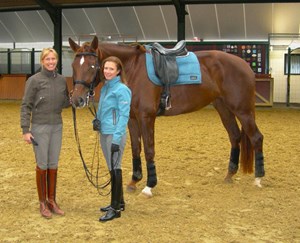
Training with Anky van Grunsven could be its own article because I had a plethora of “aha” moments both personal and professional while at her stable in Erp, the Netherlands. The key to unlocking the Dutch system of movement, I learned, is their question-and-answer method, which leads to the idea of achieving all through tempo control. The rider asks the question in the form of an aid originating from her core. The horse answers with his reaction. If it’s the correct reaction, then the rider does nothing but enjoy the ride, rewarding the horse for a correctly answered question.
I’m married to a U.S. Marine who was deployed overseas when I was at Anky’s barn. I guess I was thinking about him a lot, which made me incorporte the military concept of “escalation of force” into what I was learning from Anky. That phrase reminded me to first ask the question with the smallest aid. For example, the progression of a go-forward aid begins with just a thought. Then add core muscles, a calf squeeze, a kick, then a spur edge. Finally, if no correct answer comes from the horse, use the whip.
The Anky/Dutch Q&A method is the easiest to demonstrate with tempo control. The rider asks for a certain tempo of locomotion. The horse learns to answer in response to that request from the smallest aid, and if he maintains the tempo, then the rider does nothing but enjoy the ride, rewarding the horse by doing nothing. This less-is-more systematic style builds and builds until one day the gaits feel so effortless that almost any movements can be schooled with ease. The challenge? Dressage riders are bent on always fixing something when, really, if we learn to set the tempo initiating our aids from our core, everything else falls into place.
Angelea Kelly Walkup blazed the new media trail in 2007 with her groundbreaking web series, HorseGirlTV® (horsegirltv.com) now in its seventh season. Walkup has also created a ballet barre workout geared for equestrians (equibarre.com). As a writer, she has authored an equestrian-inspired novel to be published this year as well as the “How To Horse Shop” buyers guide. As an FEI-level dressage competitor, she has trained extensively with Anky van Grunsven in the Netherlands and has earned her U.S. Dressage Federation gold medal. Her current riding goal is to compete at the CDIs with Hansel, the gelding she imported as an unbroken 4-year-old in December 2009 (angelea.com).


